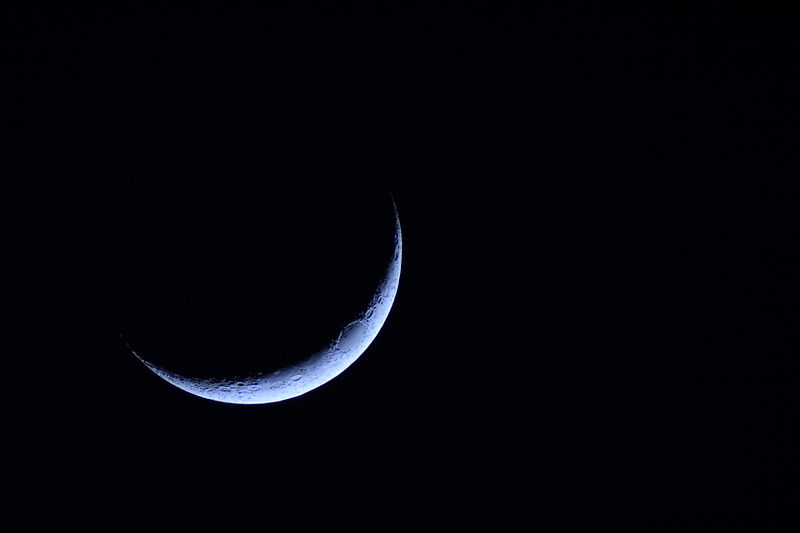The National Space Research and Development Agency (NASRDA) has announced that Nigeria will witness its first astronomical lunar crescent of the year on February 28, 2025.
In a statement issued on Saturday, NASRDA’s Director of Media and Corporate Communications, Dr. Felix Ale, revealed that the lunar crescent had been calculated to occur at 1:45 A.M. West African Time. This moment referred to as Crescent Zero Hour, is when the crescent can be detected under ideal atmospheric conditions using optical instruments like binoculars or telescopes.
According to Ale, the crescent will become visible to the naked eye later in the evening, between 6:17 PM and 7:35 PM, across various locations in Nigeria.
“Maiduguri will be the first city to witness the young lunar crescent from 6:17 PM to 6:48 PM, followed by Yola from 6:21 PM to 6:51 PM. Damaturu will follow from 6:22 PM to 6:53 PM. In Kano, Katsina, Jos, and Kaduna, the crescent will appear between 6:38 PM and 7:12 PM,” Ale stated.
He further explained that sunset and moonset in these locations will occur between 6:35 PM and 7:17 PM, depending on the city. In Enugu, the lunar crescent will be visible between 6:42 PM and 7:32 PM, while in the Federal Capital Territory (FCT), it will be seen between 6:44 PM and 7:15 PM.
The last cities to experience the lunar crescent will be Lagos and Abeokuta, where visibility is expected between 6:59 PM and 7:30 PM.
Ale advised observers to use optical aids where necessary and ensure they are positioned in areas with a clear, unobstructed view of the western horizon after sunset for optimal visibility.
The agency emphasized that the scientific report ensures accuracy for individuals who rely on lunar observations for religious, cultural, and scientific purposes. It encouraged researchers, scholars, and religious groups to utilize the findings, adding that additional data could be accessed on NASRDA’s official website.
Dr. Bonaventure Okere, Director of the Centre for Basic Space Science and Astronomy (CBSSA), noted that the lunar crescent marks the first stage of the moon’s cycle, which holds particular significance in the Islamic faith.
“The new crescent is used to determine important Islamic rites such as the beginning of the Ramadan fast,” Okere explained. “Astronomers study the moon’s rising and setting cycles to determine lunar days, which typically span 28 days, forming the basis of the lunar calendar.”
With the anticipated sighting of the lunar crescent, astronomers and religious observers alike are preparing to witness this celestial event that plays a crucial role in timekeeping and spiritual practices.





